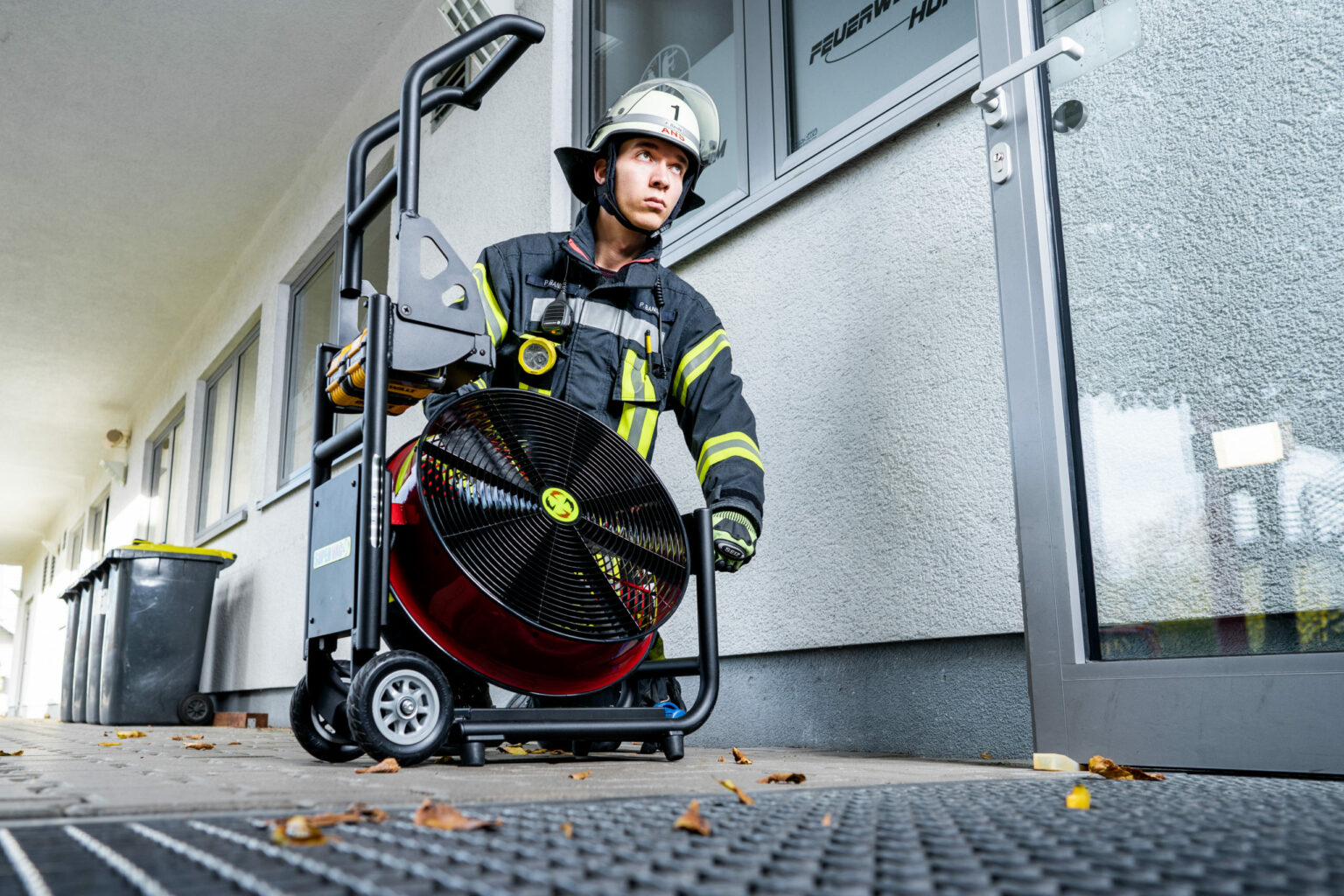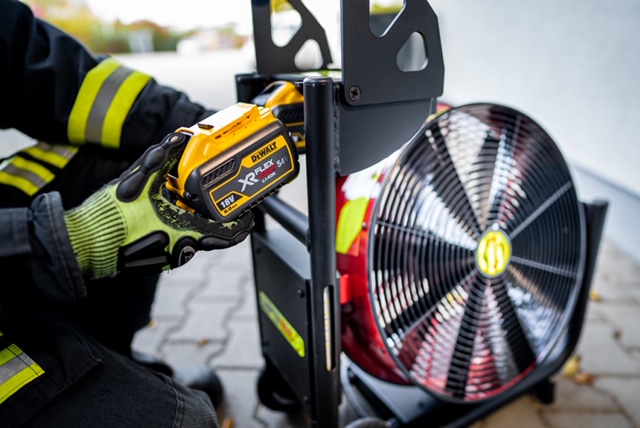Essential fan ventilation considerations
- April 26, 2021
- 8:44 am


Iain Hoey
Share this content
PPV fan specialists Super Vac discuss the main factors to consider when choosing fan ventilation equipment
Every fireground is different. When it comes to fire ventilation — the planned and systematic removal of heat, smoke and gases from a structure, followed by the introduction of fresh, cool air — there’s no one-size-fits-all ventilation tactic. Should your crew take out a window on the fire floor for horizontal ventilation, send the ladder company to the roof for vertical ventilation or opt for mechanical ventilation, like power venting or positive- or negative-pressure tactics? Compound these choices with the dynamics of the scene — building size, room geometry, interior contents and construction materials — and you can see ventilation is an art that requires the right tools.
So, what tool(s) are right for your department? Today, we’re going to take an in-depth look at PPV fans and some of the factors your crew may want to consider when selecting this equipment. Firstly, how do you plan on powering your fan? We have outlined some considerations below to take into account before deciding how you plan to power your fan.
Battery fans
Battery fans are a great choice for quick ventilation jobs. They are compact and lightweight, and many of these fans deploy and store easily. Moreover, select manufacturers, like Super Vac, work with name-brand batteries (like DeWalt and Milwaukee), which create cross-compatibility with other battery tools giving the user more flexibility.
Many battery fans provide more than 30 minutes of runtime, depending on battery selection. Meanwhile, optional AC power provides additional versatility and reliability. As you evaluate different fan airflows, be sure to look for third-party certified data!

Electric fans
Electric fans provide a reliable and perfectly clean airstream with some models being intrinsically safe for hazardous locations. Additionally, electric fans are quieter and lighter than their gas counterpart. Look for fold-down handles and flat-proof tires that make these fans easily maneuverable.
Electric fans require some setup as cords and generators are necessary to power these PPVs. Electric fans are also bulkier and heavier than battery fans but typically smaller and lighter than gas fans. A Super Vac battery fan can be equipped with AC power for a compact electric option.
Petrol fans
Petrol fans provide the highest airflows, making them a preferred choice for large structures. Petrol fans also set up more quickly than electric fans making it a go-to PPV for many first trucks at the scene. These fans are the largest, starting at 40cm and going up to 76-200cm diameter.
Although petrol fans are powerful, they can add byproducts of combustion into the airstream, if not equipped with a catalytic converter. Additionally, these fans require gas, oil and maintenance, and because they re engine powered, petrol fans are louder than battery or electric fans.
Water Turbine fans
Water turbine fans run without the use of electricity or gasoline, making these PPVs great in explosive locations with unknown gases. Available in 76cm, this is the largest portable PPV safe for these environments, making this fan a favorite for docks and shipping facilities.
Water turbine fans require more setup, including 7-17 bar water supply. Due to this high consumption (250 or 500 lpm, depending on model), it’s recommended the water be recirculated. This fan also has less tilt than some battery and electric models.
Ensure you pick the right size fan
Size is another key factor, especially when space comes at a premium on most fire apparatus. Petrol blowers and high-capacity electric fans require considerable storage and are often relegated to support apparatus. But modern battery PPV fans are smaller. At just 21 kgs and 66cm x 66cm x 30cm, the Super Vac battery fan is compact and can actually be stored on its side in shelf-style compartments.

Meanwhile, Super Vac also offers the largest breadth of PPVs, spanning from the 20cm diameter confined space Nano to the trailer-mounted 200cm diameter BFF, which produces approximately 1.25 million cubic meters of air per hour, ideal for ventilating tunnels, airports and other large structures. To help narrow down your selection, consider how much room you have on your truck to store your fan, evaluate the size and types of structures in your jurisdiction and decide how much output you need from your fan.
Once you’ve identified your power source and a general fan size, you can select your preferred motor or engine. Do you need single- or variable-speed functionality? Do you need to spec an ATEX motor for hazardous locations? Pneumatic motors feature compressed air and make these fans intrinsically safe for hazardous environments. Pneumatic- and water-powered motors, which use intrinsically safe power sources, are another option in hazardous environments.
Avoid noise pollution effecting communication
Another consideration … noise pollution. Noise is one of the major drawbacks associated with mechanical ventilation, which is especially true of petrol-powered fans. Noise pollution can adversely affect fireground communication, both in close proximity to the fan and within the structure itself. However, noise is no longer an issue for battery fans. The decibel reading for Super Vac’s V18-BD fan produces an 85 dB reading at 1 meter in front of the fan, and 75 dB from 3 meters, which is only slightly louder than the sound a shower makes. With these quieter fans comes improved communication. (Tack on the fact battery fans produce less airborne cancer-causing agents and you can see why battery technology is growing in popularity.)
Finally, decide what PPV add-ons you need to add more functionality to your fan. Select fans can be equipped with accessories that create light, foam, mist or even heat to aid in rescue and rehab efforts. Different fan guard options give crews the ability to adjust fan-entryway setback, while a door bar / hanger kit allows the fan to be mounted in a doorway to elevate airflow. Meanwhile, smoke curtains can be used to help control oxygen while maintaining door control and mitigating smoke damage, and spiral ducts are perfect for helping move large quantities of air into hard-to-reach places, like confined spaces. For gas fans, consider spec’ing an exhaust hose extension to remove emissions away from the PPV intake, or a catalytic convert to significantly reduce emissions.



